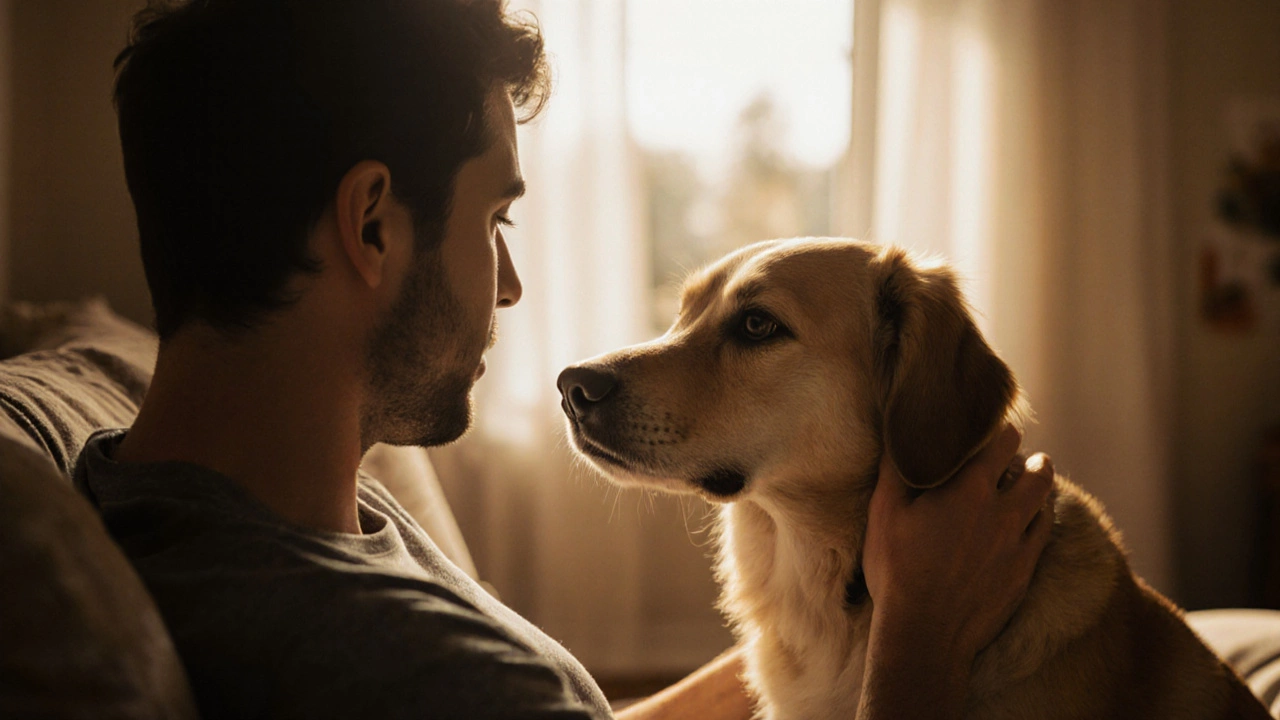Dog Bonding: Build a Stronger Connection with Your Canine Companion
When we talk about dog bonding, the deep emotional connection between a dog and its human. Also known as canine attachment, it’s not just about cuddles—it’s about trust, communication, and mutual understanding that turns a pet into a true companion. This isn’t something that happens overnight. It’s built through consistent, positive interactions that show your dog they’re safe, seen, and valued.
Good dog bonding, the deep emotional connection between a dog and its human. Also known as canine attachment, it’s not just about cuddles—it’s about trust, communication, and mutual understanding that turns a pet into a true companion. isn’t about training tricks or buying the fanciest toy. It’s about reading your dog’s body language. When your dog puts a paw on you, it’s not always begging for food—it might be seeking reassurance. When they stare at you during a quiet moment, they’re not just bored—they’re checking in. These small behaviors are part of the silent language of attachment. And when you respond with calm attention instead of ignoring them or scolding, you’re reinforcing the bond. The same goes for how you handle stress. If your dog whines during grooming or gets anxious on car rides, how you react shapes whether they see you as a source of comfort or fear. That’s why dog behavior, the observable actions and reactions of dogs in response to their environment and humans. Also known as canine conduct, it’s the foundation of every meaningful relationship with a dog. matters more than any command.
Strong dog bonding, the deep emotional connection between a dog and its human. Also known as canine attachment, it’s not just about cuddles—it’s about trust, communication, and mutual understanding that turns a pet into a true companion. doesn’t need grand gestures. It thrives on routine: feeding at the same time, walking the same route, playing the same game. It grows when you pay attention to the little things—like how your dog tilts their head when you say their name, or how they sigh when they settle beside you. That’s the real work of bonding. And it’s why the 7-7-7 rule works: it gives your dog time to feel safe before you even start training. It’s why teaching your puppy its name isn’t just about recall—it’s about making them feel seen. It’s why avoiding prong collars isn’t just about ethics—it’s about protecting the trust you’re trying to build. These aren’t separate topics. They’re all pieces of the same puzzle.
What you’ll find below isn’t a list of tips. It’s a collection of real stories, real science, and real experiences from dog owners who’ve learned how to speak their dog’s language. From understanding why your dog cries at the groomer to figuring out how to make travel less stressful, every post here is about deepening the connection—not just fixing a problem. You don’t need to be a professional trainer. You just need to show up, pay attention, and be patient. That’s where the real magic happens.
Posted By Bryndle Redding On 23 Nov 2025 Comments (0)
Does My Dog Know I Love Him? The Science Behind Dog Emotions and Bonding
Dogs don’t need words to know you love them-they feel it in your routine, your touch, and your presence. Science and behavior show how deep this bond really goes.
READ MOREPosted By Bryndle Redding On 30 Oct 2025 Comments (0)
Why Does My Dog Sleep Next to My Bed? The Real Reasons Behind the Behavior
Your dog sleeps next to your bed not because they’re spoiled, but because of instinct, scent, and trust. Learn the real reasons-and what to do if you want to change it.
READ MORE
